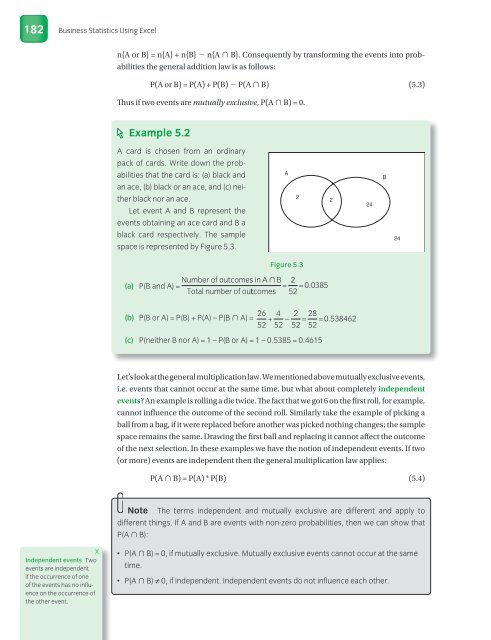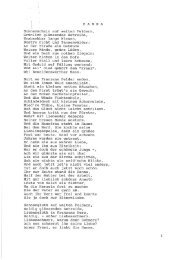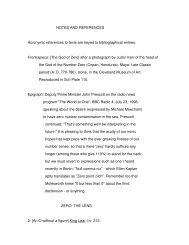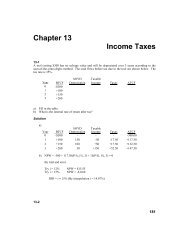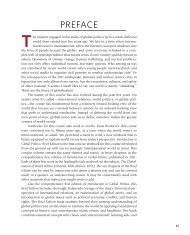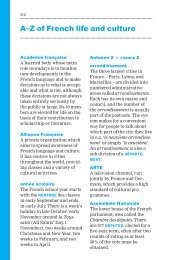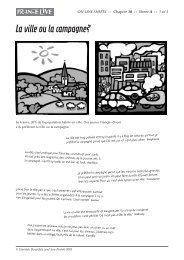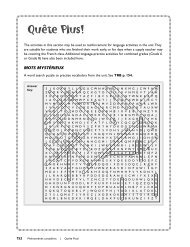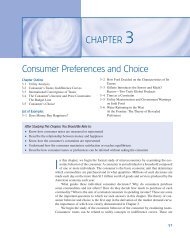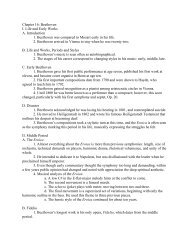Probability Distributions - Oxford University Press
Probability Distributions - Oxford University Press
Probability Distributions - Oxford University Press
You also want an ePaper? Increase the reach of your titles
YUMPU automatically turns print PDFs into web optimized ePapers that Google loves.
182 Business Statistics Using Excel<br />
X<br />
Independent events Two<br />
events are independent<br />
if the occurrence of one<br />
of the events has no influence<br />
on the occurrence of<br />
the other event.<br />
n{A or B} = n{A} + n{B} 2 n{A > B}. Consequently by transforming the events into probabilities<br />
the general addition law is as follows:<br />
P(A or B) = P(A) + P(B) 2 P(A > B) (5.3)<br />
Thus if two events are mutually exclusive, P(A > B) = 0.<br />
Example 5.2<br />
A card is chosen from an ordinary<br />
pack of cards. Write down the probabilities<br />
that the card is: (a) black and<br />
an ace, (b) black or an ace, and (c) neither<br />
black nor an ace.<br />
Let event A and B represent the<br />
events obtaining an ace card and B a<br />
black card respectively. The sample<br />
space is represented by Figure 5.3.<br />
Number of outcomes in A∩B 2<br />
(a) P(B and A) =<br />
Total numberofoutcomes<br />
52 0.0385<br />
= =<br />
(b) P(B or A) = P(B) + P(A) – P(B > A) = 26 4 2 28<br />
+ − = = 0. 538462<br />
52 52 52 52<br />
(c) P(neither B nor A) = 1 – P(B or A) = 1 – 0.5385 = 0.4615<br />
Let’s look at the general multiplication law. We mentioned above mutually exclusive events,<br />
i.e. events that cannot occur at the same time, but what about completely independent<br />
events? An example is rolling a die twice. The fact that we got 6 on the frst roll, for example,<br />
cannot influence the outcome of the second roll. Similarly take the example of picking a<br />
ball from a bag, if it were replaced before another was picked nothing changes; the sample<br />
space remains the same. Drawing the frst ball and replacing it cannot affect the outcome<br />
of the next selection. In these examples we have the notion of independent events. If two<br />
(or more) events are independent then the general multiplication law applies:<br />
P(A > B) = P(A) * P(B) (5.4)<br />
Note The terms independent and mutually exclusive are different and apply to<br />
different things. If A and B are events with non-zero probabilities, then we can show that<br />
P(A > B):<br />
• P(A > B) = 0, if mutually exclusive. Mutually exclusive events cannot occur at the same<br />
time.<br />
• P(A > B) ≠ 0, if independent. Independent events do not influence each other.<br />
A<br />
2<br />
Figure 5.3<br />
2<br />
24<br />
B<br />
24


